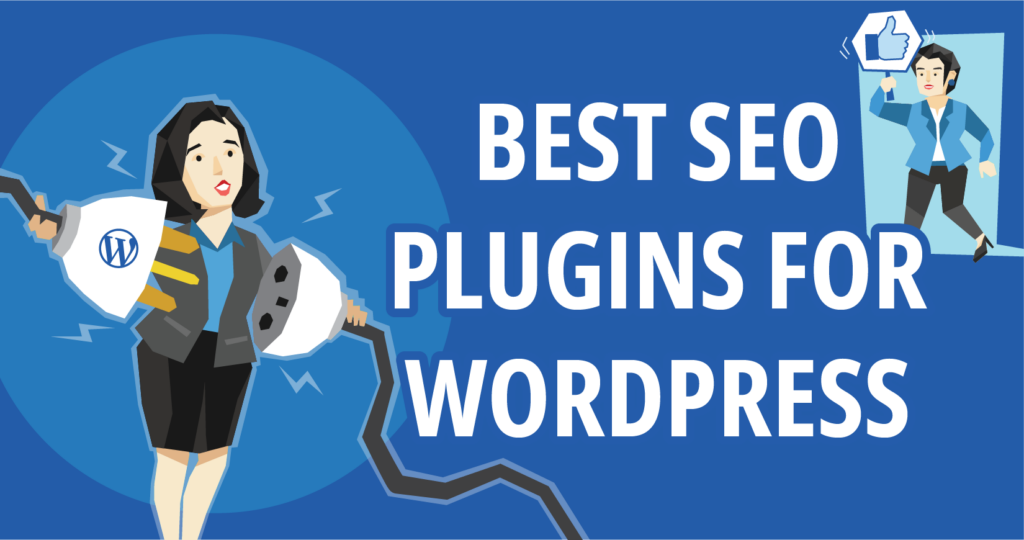Website Performance Metrics You Should Be Analyzing

In the current digital age, where social media platforms and online business assets often drive the key operations that keep a business afloat, there are a myriad of technological aspects of a successful business that must be analyzed, understood, and thoroughly strategized.
Everything from internal operations, to HR, to strategic planning, to IT, to marketing and sales, must follow best practices if SMEs – and larger enterprises – wish to compete and stand out among the competition.
Having an online presence – whether it be a website business asset, a cloud platform, and/or a social media presence – has become a necessary business asset and is a critical way for the modern enterprise to connect with prospects, convert leads, and maintain customers. When it comes to current marketing trends – in order to utilize the best Top of the Funnel (ToFu), Middle of the Funnel (MoFu) and Bottom of the Funnel (BoFu) marketing strategies – the utilization of inbound marketing often includes online assets such as Blogs, Articles and Social Media content, and is one of the most significant ways to draw leads to your company’s products and services.
Inbound marketing is the utilization of public online platforms that are filled with pertinent content that drives leads and prospects to said platforms in order to convert them to customers by giving them significant information that they need.
According to several statistics, 80 percent of end-users prefer to obtain information on a company’s products/services via a series of articles versus advertisements (“How Effective is Inbound Marketing – Statistics and Trends (Infographic)”)[1]. Additionally, inbound leads are not only 61 percent less costly than outbound leads, but also produce 54 percent more leads, while doubling the average site conversion rate, from 6 percent to 12 percent (“How Effective is Inbound Marketing – Statistics and Trends (Infographic)”)[2].
For all stages of content creation, marketing, sales, and customer service workflows, a well-done, robust, speedy, comprehensive website is a must for a business of any size. However, once a website is completed and deployed, it is very important to measure the performance of the website via its Key Performance Indicators (KPIs), whether through platforms such as Google Search Console/Google Analytics, Microsoft’s Clarity Web tools, or via other means. Regardless of the method, measuring a website’s data, via analytics tools, is the only true way for a business to determine how they are succeeding, how they are failing, and how to proceed with their business model based on where they’ve been, where they are now, and where they plan to go.
The many different types of metrics for a business to capture, parse, and analyze data can be divided into two groups – Website Technicalities and Customer Behavior:
- Website Technicalities focus on how well and quickly the website displays from the web server (host) to the client side. This includes metrics such as time to first byte, time to first paint, average load time, etc.
- Customer Behavior includes customer interactions with online web properties associated with the website, and includes metrics such as bounce rate, churn rate, conversion rate, etc.
The above two categories include metrics such as:
- Organic Search Results (with regard to SERPs) versus Advertisement links
- SEO (Search Engine Optimization) Keywords and the utilization of Low-hanging Fruit
- Churn Rate
- Bounce Rate
- Time to First Byte
- Time to First Paint
- Average Load Time
- Conversion Rate
- And many more…
When a company’s Chief Marketing Officer (CMO), in conjunction with data officers, finance officers, and the CEO, is able to utilize analyzed data to measure the performance of an enterprise’s web properties, they can carry out a number of desirable actions that can better the company’s IT infrastructure ROI and the overall bottom line:
- Optimize Website Performance on the server side/host
- Change SEO keywords to get better SERP organic search conversions
- Alter demographic targets
- Add advanced technology such as Chatbots, AI and Automation Scripts
- Optimize targeted Content to minimize churn rates and bounce rates
- Change ToFu, MoFu and BoFu website systems
- Change Website Aesthetics
- Link or change social media/business website properties via consolidation
Ultimately, analyzing a business website’s metrics presents a company’s executives with a gauge of how well their online assets are performing, and – more importantly – how they can become better at attracting more customers.
The Importance of Performance Metrics
As noted above, in a general sense, monitoring and measuring a business website’s KPIs gives a company’s marketing directors an inside view on how well their business/marketing and sales strategies are doing, from an online perspective (in association with web assets). This means that a business can use such data to strategically change and optimize their marketing directives, and to even alter their business model based on whom – and how – they are attracting certain customers. That is, when viewing their marketing IT strategic plan, such executives can determine how well their blueprint is holding up in the real world, and alter steps as needed to reach their overarching goals.
For example, if executives want to monitor how online leads are finding the business web page, they might track whether leads/customers are arriving at the initial page via Google SERPs/Organic search results, or Advertisements, and can even determine how different demographics are finding different products and services. This can either prove or disprove current marketing strategies that aim to target different demographics via specific online routes, which can result in optimizing and tweaking marketing strategies.
In another example, analyzing how well a website’s content pertains to certain leads by looking at churn rates/bounce rates and customer conversion rates can inform a business how to structure their content marketing on their website.
Ultimately, with regard to a company’s overarching marketing blueprint, website KPIs/metrics are like the blueprint’s landmarks that help executives determine if their business is going in the right direction – and if not, how they should alter their course.
Some key terms (associated with critical metrics) that should be understood when analyzing what and how a business should monitor website KPIs and metrics include:
- Churn Rate – CR is the measure of the number of customers/leads that leave a particular group, such as the number of customers lost or the number of online leads that exited without becoming customers
- Bounce Rate – BR is the number of prospects that leave a website’s initial page without clicking any links (only viewing one page)
- Conversion Rate – the CR is the percentage of prospects that convert to qualified leads by taking a desired action on a website platform
- SERP – Search Engine Results Page
- Organic Search Results – Prospects who find your business website via search results that match relevant search keywords
- Inbound Marketing – A type of marketing that draws customers to relevant business properties by publishing pertinent and desired information for customer consumption (typically online)
- Outbound Marketing – The promotion of a product via standard media advertisements, PR and promotions
- Uptime – The time that a web server is successfully rendering a website so that customers are able to view its content
- Time to First Byte – The time that it takes for the first byte to reach a customer’s client-side browser from the web server
- Time to First Paint – The time that it takes for the browser to render pixels to the customer’s screen
- Time to Interactive – The time it takes for a visually represented website to respond to user actions
- Total Page Size – The total sum of all of the website elements, usually in KB
- Average Page Load Time – The average time it takes for a website to load all of its elements
- DNS Lookup Time – The time it takes for a DNS provider to lookup and convert a domain name into the pertinent IP address
While there are other key metrics for a business to measure, the above are some of the most critical KPIs that need to be understood, analyzed, and measured by businesses of all sizes.
Optimizing Speed Performance
The ultimate goal of analyzing website metrics is to determine whether the user’s experience is optimized through a well loading and well responsive website.
Some more detailed speed KPIs, include:
- Time to Title – Time to Title is the time it takes for the web page title to appear in the client-side browser tab. The time is usually in milliseconds (ms).
- Connection Time – The CT is the time it takes for a connection to be established (once a web request is made) from the origin server to the user’s browser, which can be longer in different regions or during times of high server traffic.
- Time to Last Byte – The time it takes for all bytes of a website page to be received by the user’s browser.
Why is it Crucial?
According to statistics, 46 percent of users indicate that waiting for a page to load is their major dislike of mobile browsing. Additionally, 53 percent of people leave a mobile web page if it takes longer than three seconds to load, and 40 percent of users leave a website if it takes more than three seconds to load. The longer a website takes to load, the greater chance that prospects will leave a website before it finishes loading, which hurts the bottom line.
A well-performing, fast-loading website will engage and keep more users, which is a website’s ultimate goal.
Measuring Your Audience
While measuring the technical details of a website is important, measuring your enterprise’s audience is just as critical. This helps a business know its demographics, its users, its customers, its leads, and its prospects, and may even help executives gauge what their prospects/leads are looking for.
By measuring and analyzing audience data, a company can also obtain a greater understanding of their marketing/sales reach and impact, how well their marketing (ToFu/MoFu) strategies are working to attract new customers and keep older prospects, and how well overall inbound marketing workflows are doing. This includes analyzing KPIs such as the number of website visitors, number of sessions, unique visitors, new versus returning visitors, etc.:
- Page Views – Represents every time a page is loaded, even if by the same user in a single session
- Sessions (visits) – Represents a single user’s visit to a website, regardless of whether the user visits different pages or not
- Unique/New Visitors (users) – Represents New and unique (distinct) users that visit a website, versus general visits, which encompasses how many times a website is visited, even if by only one visitor
- Returning Visitors – Represents visitors who return to a website and are thus not new visitors
Why is it Crucial?
Analyzing visitor metrics helps a business to determine if their enterprise is growing (online), or depleting, and how fast or slow the growth/depletion rate is, which can help marketing officers alter their strategy accordingly. Executives can also use industry averages to determine the ideal ratio between new and returning users, and assess how well they are doing when comparing their business with the competition. With regard to returning users, this KPI will indicate that the business is gaining target audience trust.
Analyzing your Traffic Sources
Businesses need to know where their leads are coming from, which can include websites, Google SERPs, social media, email campaigns, PPC ads, directory listings, word of mouth, etc. This metric also determines the type of traffic source, including organic traffic from SERPs, referrals, direct traffic, email marketing, paid traffic, and social media.
- Unique visitor Traffic – encompasses new or distinct visitors to a website, and are not returning visitors of your online business asset, within a given time frame.
- Direct Traffic – encompasses website visits from directly typing the website address into the URL, and is always associated with traffic that does not have a referring page.
- Organic Traffic – usually associated with SERPs, organic traffic is simply associated with website visits that do not result from paid traffic.
- Email Campaigns – Email Marketing utilizes large sets of emails that are sent out to a myriad of customers to link them to products/services or business assets of interest.
- Paid Traffic – Visits resulting from paid ads.
- Social Media – When a social media platform is the referring website from which a lead finds your website, analytics engines will capture that, which can help executives determine which social media pages are working best.
Why is it Crucial?
Essentially, this metric helps a business know exactly what is working and what isn’t working – that is, what routes and campaigns are most likely succeeding in drawing in more customers and leads. This can give executives key insights into how to alter strategies to reach more customers and target demographics. This metric also allows you to get to know your potential customer better and to improve marketing techniques based on that knowledge.
Measuring Your Visitors’ Behavior
After measuring and analyzing website traffic and technical metrics, how visitors interact with your website is the next most critical metric. This tracks whether visitors are spending a considerable amount of time on your business website (and therefore are more likely to convert) or whether they are leaving immediately. Metrics associated with customer behavior include:
- Error Rate – This measures the rate at which problem requests are made versus total requests.
- Bounce Rate – How many users leave the website while viewing only the initial page. Lower bounce rates equal fewer users leaving the initial page without clicking links (equating with more user interaction with the website). Additionally, lower bounce rates and longer session times increase search engine ranking statistics with Google.
- Conversion Rate – How many users take a desired action on the website. Higher conversion rates typically flow from lower bounce rates and longer session times.
- Top Pages – A simple metric that reveals the most visited pages versus least visited pages.
- Click-Through Rate (CTR) – A metric that measures the ratio of users who click a link from a SERP or referral website/email versus the total number of users who view the marketing link from an email/website/SERP.
Why is it Crucial?
Next to website traffic sources, customer behavior helps to reveal critical insights on how your business website is working, including how/why certain content is drawing prospects to convert, why some content is failing to convert, and whether the website as a whole is working to convert leads into customers (and prospects into qualified leads) or only incurring greater bounce rates.
Ultimately, this metric determines whether your website is relevant to your target audience (content wise and product/service wise), and if it’s easy to navigate.
Measuring Conversion Rates
Conversion rates are critical, in that they reveal how well prospects are reacting positively to marketing content, and are becoming qualified leads and customers. This analysis is done by measuring your visitor’s activities while on the website, and includes visitors undertaking positive and desired actions, such as signing up for a newsletter, downloading content, requesting a quote, sending a message, or browsing through all of the links.
Why is it Crucial?
This metric is important in that it helps executives determine whether a visitor’s experience is optimized or needs more work. Ultimately, it helps to fine-tune specific content and particular website strategies, which can result in refined website content that helps to convert more leads into customers.
Measuring Your Profits and ROI
The overall costs associated with building and maintaining a business website should always be measured and compared with the profits – bottom line and top line – associated with that website. In measuring and analyzing the cost of conversions and the overall return on investment (ROI), this shows whether the cost of maintaining the website is more than – or less than – the conversions and associated revenue gained.
Why is it Crucial?
Ultimately, the profits/ROI metric helps business finance officers determine the cost-effectiveness of the website, and whether it is financially advantageous to utilize the website asset as a part of the business strategy.
Focus on Quality, Not Quantity
The quality of KPIs is most important in order to allow executives to obtain undiluted, robust metrics that fully represent the inner workings of the enterprise’s online audience. To this end, quality should be valued over large quantities of KPIs, the majority of which might not be relevant for most companies.
There are a number of valuable analytics and metric-measuring performance tools that can be deployed, including a variety of CRM systems (that integrate with online business assets), and Google Analytics.
In addition to the above metrics, the aforementioned tools also offer unique metrics that can help a business generate more qualified leads, increase their audience reach, and improve sales conversion rates.
Generate More Qualified Leads
Qualified leads are business opportunities (between the MoFu and BoFu sections of the marketing funnel) that are ready for a sale. Generating qualified leads from prospects helps to improve conversion rates, resulting in more customers, and should thus be a primary goal of all companies.
GA and robust CRMs have a few metric tools that can help a business make the most of analyzing and generating more qualified leads:
- GA Completed Goals: Google Analytics has a robust “Goals” system that can help a business plan for and meet their leads and conversions goals. Essentially, a goal helps a business keep abreast of their primary goals and objectives, and thus measures how often a user completes a desirable action on their website (“converts”). This helps a business measure, strategically plan, and generate more qualified leads.
- CRM Lead Count/Management: CRM suites also allow a business to generate more qualified leads by measuring, analyzing, and capturing KPIs associated with lead behaviors (on a website), which allows a business to gain insights on how to generate and manage more leads.
Increase Audience Reach
Market research and increasing your business audience is critical to scaling your enterprise. One way to increase your insights into (and from) your target audience – and to increase your audience reach – is utilizing surveys before and after website redesigns, and at key points during an enterprise’s scaling operations. Some robust survey systems include Survey Monkey, and Ask Your Target Market, and other feedback tools.
Improve Sales Conversion Rate
Improving your company sales conversion rates simply means creating more customers from prospects or leads, and thus making more profits. To do this, some unique KPIs can be measured that can allow a business to reach more sales via the optimizing and alteration of strategies. Google Analytics’ E-commerce system, for instance, has an Average Order Value (AOV) metric that reveals the average value of a given order, which can help a business to plan its goals, meet its objectives, and analyze how well its marketing/sales strategies are doing. For Product Performance, Google Analytics’ E-commerce system also has a Product Performance metric, which reveals key insights into how customs are interacting with an enterprise’s products. Such a metric can also help a business determine how to increase sales and conversions, and can reveal which sales/marketing strategies are working, and which need to be optimized. Essentially, the product performance metric can give executives critical insights that, if understood, can help them raise their conversion rates by revealing the entirety of a company’s product performance rates and patterns.
Optimizing User Experience
The ultimate goal of a business is to increase its conversion rate via its online business platforms. Performance metric analysis, whether it be associated with their social media platforms or websites, can help accomplish this goal. Monitoring and measuring such KPIs helps users optimize their website experience, which helps to increase their trust in a brand and business, increasing the company’s credibility and creating more future business opportunities.
There are a myriad of metrics to measure and analyze in a website’s technicalities, and such KPIs help a business to optimize their website platform to offer the best experience to end-users through their browser. While time to title, time to first byte, time to last byte, and overall average load time is critical, the customer behavior metrics are equally – if not more – critical, the most critical of which are bounce rates, CTRs, traffic sourcing, and visitor/session metrics. While the former metrics (website technicalities) help a business interpret how well their website is running, the more critical customer behavior metrics show a company how well their visitors respond to said website. Although the former is important – since, without a well running website, it is unlikely that customers will respond well – the latter reveals more information and key insights.








